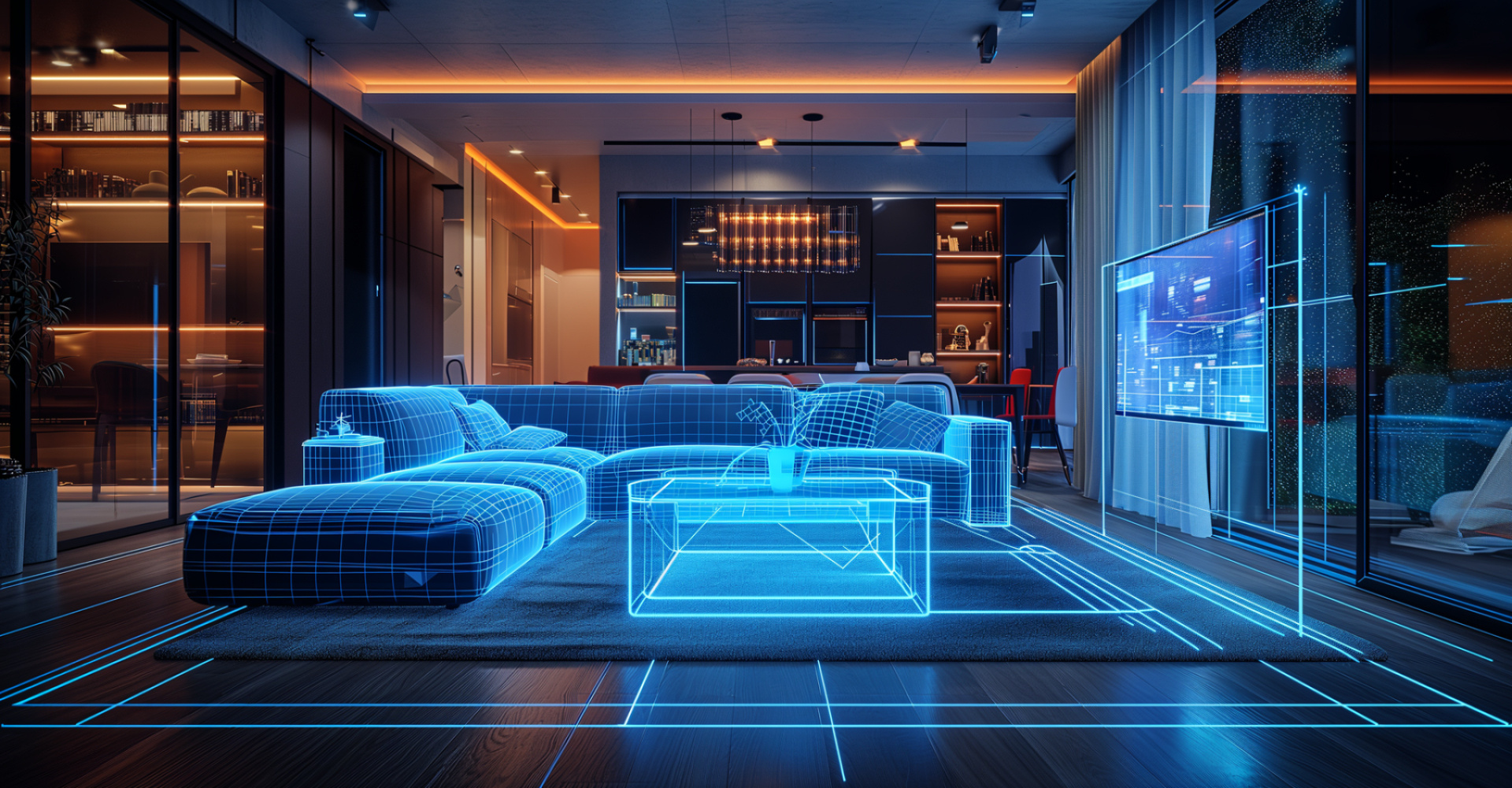
Augmented reality in home fabric selection
Published by Admin on
Oct 21, 2024 8:00:00 AM
Tech today gives us so many cool tools and gadgets that is quickly changing our expectations when it comes to engaging with brands. Sure, everyone loves a fabric sample book but the Information Age is taking something as simple as a square cutting of fabric and turning it into an experience.
One of the most exciting advancements is the use of augmented reality (AR) in home fabric selection. AR applications like Glyph are transforming the traditional fabric shopping experience, allowing consumers to visualise different digital fabric options in their own living spaces before making a purchase. But how does an interaction so reliant on human sensations go from offline to online and maintain the authenticity of that experience?

Adidas

Apple

AR virtual fitting rooms for Lily in Shanghai metro

Burberry

IKEA

Nike
The evolution of fabric selection
Traditionally, selecting furnishing fabrics involved visiting multiple stores, sifting through countless fabric samples, and trying to imagine how each option would look in a home. This process was often time-consuming and fraught with uncertainty. Even with fabric swatches, it could be challenging to envision how a small sample would translate to an entire sofa, curtain, or cushion.
Augmented reality has changed the game by bridging the gap between digital and physical worlds. With technology like Glyph, consumers can now see how different 3D fabric textures will look in their actual living spaces in real-time. This technology overlays digital fabric textures onto real-world surfaces, like furniture, providing a realistic preview of the final result.
How Glyph enhances the shopping experience
Glyph, a pioneering AR application, has made it easier than ever for consumers to explore and select home fabrics. By simply using a smartphone or tablet, users can access a vast library of digital fabric textures and apply them to their furniture and décor virtually. This interactive experience allows users to experiment with different colours, patterns, and materials, no matter where they are, as long as they have an AR-enabled device like a smartphone or tablet. The benefits are:
Realistic visualisation
Unlike traditional methods, where consumers had to rely on imagination and small swatches, Glyph provides a full-scale view of how the fabric will look on their furniture. This realistic visualisation helps consumers make more confident choices, reducing the likelihood of regret after purchase.
Convenience and efficiency
Glyph streamlines the fabric selection process, saving consumers time and effort. Users can simply browse and compare fabrics within the app. This convenience is especially valuable for busy individuals who want to make quick and informed decisions without the time trap of shopping.
Enhanced creativity
With Glyph, consumers can experiment with different fabric combinations and design schemes effortlessly. The app allows users to mix and match fabrics, colours, and patterns, helping them discover unique and personalised decor solutions. This creative freedom inspires users to explore new design possibilities and express their individual styles.

-01.png?width=1200&length=1200&name=Screenshot%20(334)-01.png)
-01.png?width=1200&length=1200&name=Screenshot%20(333)-01.png)

Impact on the home decor industry
The integration of AR in home fabric selection is not only beneficial for consumers but also has a profound impact on the home décor industry. Retailers and furniture brands are recognising the value of AR technology in enhancing customer engagement and satisfaction. By offering AR applications like Glyph, businesses can provide a more interactive and immersive shopping experience.
Increased customer satisfaction
AR applications help customers feel more confident in their purchasing decisions, leading to higher satisfaction levels. When consumers can see exactly how a fabric will look in their home, they are more likely to be pleased with the final result. This increased satisfaction can result in positive reviews, repeat business, and word-of-mouth referrals.
Reduced returns and exchanges
One of the challenges in the home décor industry is managing returns and exchanges due to customers changing their minds after seeing the product in their space. AR applications minimise this issue by providing an accurate preview of the fabric, reducing the chances of post-purchase dissatisfaction and the need for returns or exchanges.
Competitive advantage
Retailers that embrace AR technology gain a competitive edge in the market. By offering innovative tools like Glyph, they can attract tech-savvy consumers who appreciate the convenience and interactivity of AR shopping. This differentiation can help businesses stand out and capture a larger share of the market.

Amikasa

IKEA

Houzz

Overstock
Augmented reality is transforming the home fabric selection process, making it more convenient, efficient, and enjoyable for consumers.
Applications like Glyph allow users to visualise different fabric options in their own living spaces, ensuring that they make informed and confident decisions. As AR technology continues to advance, its impact on the home decor industry will only grow, offering new opportunities for retailers and consumers alike. Embracing this digital innovation, Twinbru remains committed to enhancing the fabric shopping experience, bridging the gap between imagination and reality.
Tags:
3D Visualisation,
Customer Journey,
3D Design,
3D Fabric Textures,
Digital Transformation,
Digital prototyping,
Augmented reality,
AR,
Digital Fabric Sample,
Interior Visualisation